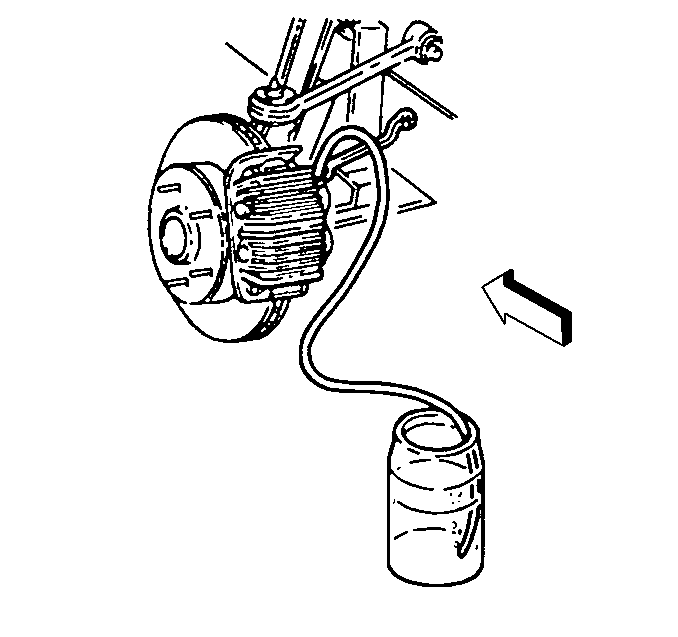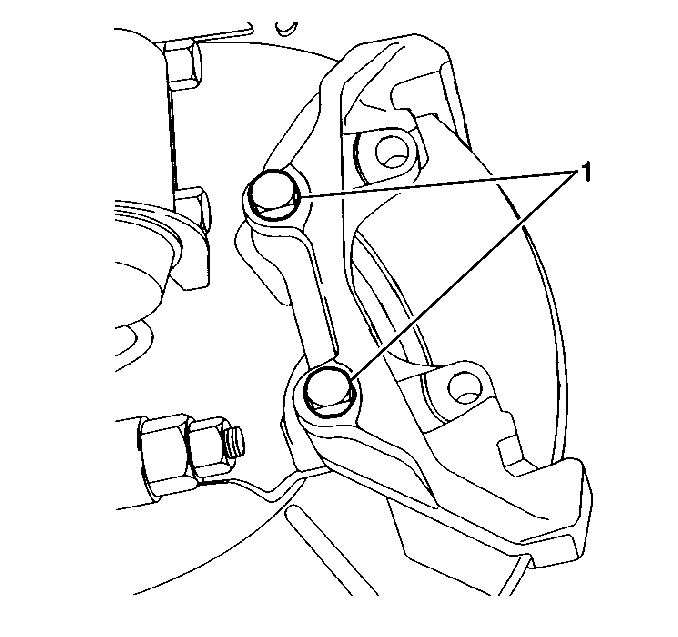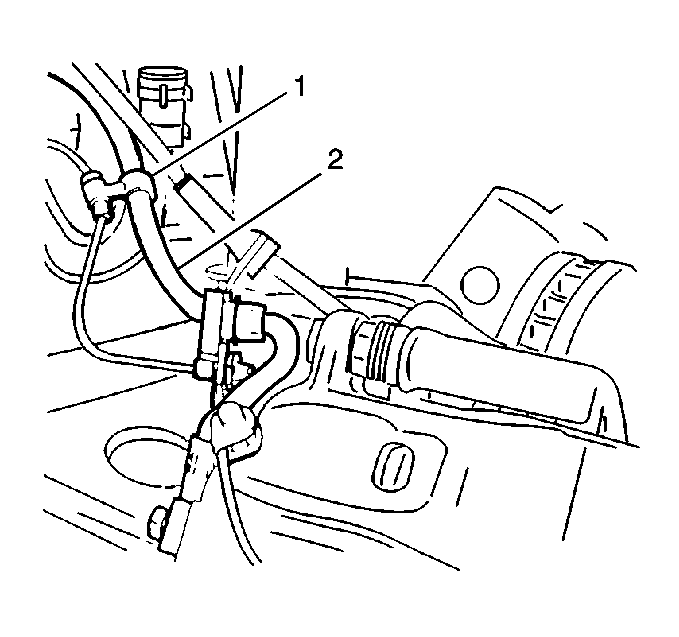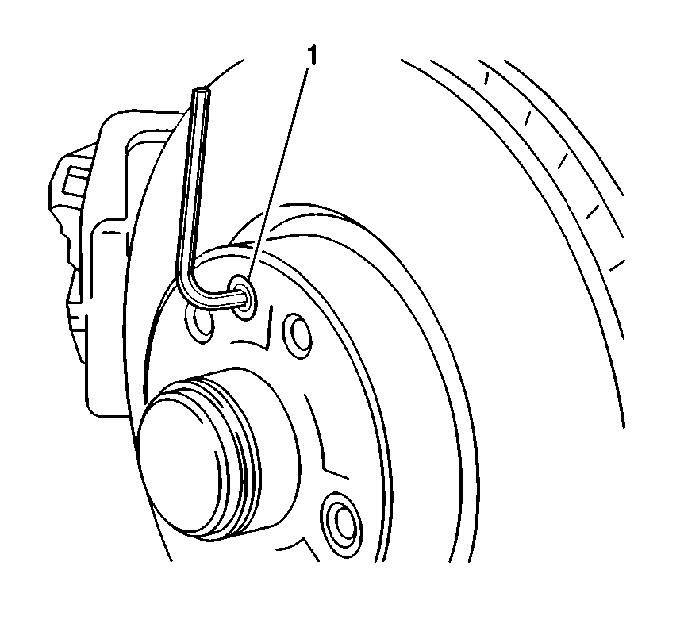Removal Procedure
- Raise and suitably support the vehicle. Refer to Lifting and Jacking the Vehicle in General Information.
- Remove the tire and the wheel. Refer to Tire and Wheel Removal and Installation in Tires and Wheels.
- Open the bleeder screw.
- Attach a tube over the bleeder screw to catch the brake fluid in a container.
- Compress piston into caliper housing bore to provide clearance between linings and rotor.
- Remove the caliper bracket bolts (1) and discard.
- Remove the caliper and bracket together and secure with mechanic's wire.
- Remove the brake rotor set screw (1).
- Remove the brake rotor.
Important: Brake fluid in the caliper is subject to contamination by heat. Do not force the contaminated fluid back through the brake system.



Important: DO NOT twist or crimp the brake hose (2) and/or the brake pad wear sensor wire.

Installation Procedure
Notice: Whenever the rotor has been separated from the axle flange, clean any rust or foreign material from the mating surface of the axle flange and brake rotor. Failure to do this may result in increased lateral runout of the rotor and brake pulsation.
- Chase the caliper bracket mounting threads in the steering knuckle to remove any residual locking compound.
- Install the brake rotor.
- Install the brake rotor set screw (1).
- Install the caliper and bracket to the steering knuckle.
- Coat the new caliper bracket bolts (1) with 272 Threadlocker, GM P/N 12345493 or equivalent.
- Install the new caliper bracket bolts (1).
- Install the tire and wheel. Refer to Tire and Wheel Removal and Installation in Tires and Wheels.
- Lower the vehicle.
- Fill the master cylinder reservoir.
- Make 20 stops from 48 km/h (30 mph) using medium to firm brake pedal pressure to burnish the brake rotors.
Notice: Use the correct fastener in the correct location. Replacement fasteners must be the correct part number for that application. Fasteners requiring replacement or fasteners requiring the use of thread locking compound or sealant are identified in the service procedure. Do not use paints, lubricants, or corrosion inhibitors on fasteners or fastener joint surfaces unless specified. These coatings affect fastener torque and joint clamping force and may damage the fastener. Use the correct tightening sequence and specifications when installing fasteners in order to avoid damage to parts and systems.

Tighten
Tighten the brake rotor set screw to 4 N·m (35 lb in).

Notice: Use the correct fastener in the correct location. Replacement fasteners must be the correct part number for that application. Fasteners requiring replacement or fasteners requiring the use of thread locking compound or sealant are identified in the service procedure. Do not use paints, lubricants, or corrosion inhibitors on fasteners or fastener joint surfaces unless specified. These coatings affect fastener torque and joint clamping force and may damage the fastener. Use the correct tightening sequence and specifications when installing fasteners in order to avoid damage to parts and systems.
Tighten
Tighten the caliper bracket bolts (1) to 95 N·m
(70 lb ft) on the first pass and additional 37 degrees
on the second pass.
Important: New braking surfaces must be broken in or burnished after brake pads are installed and/or after rotors are refinished. Avoid overheating the brakes.
